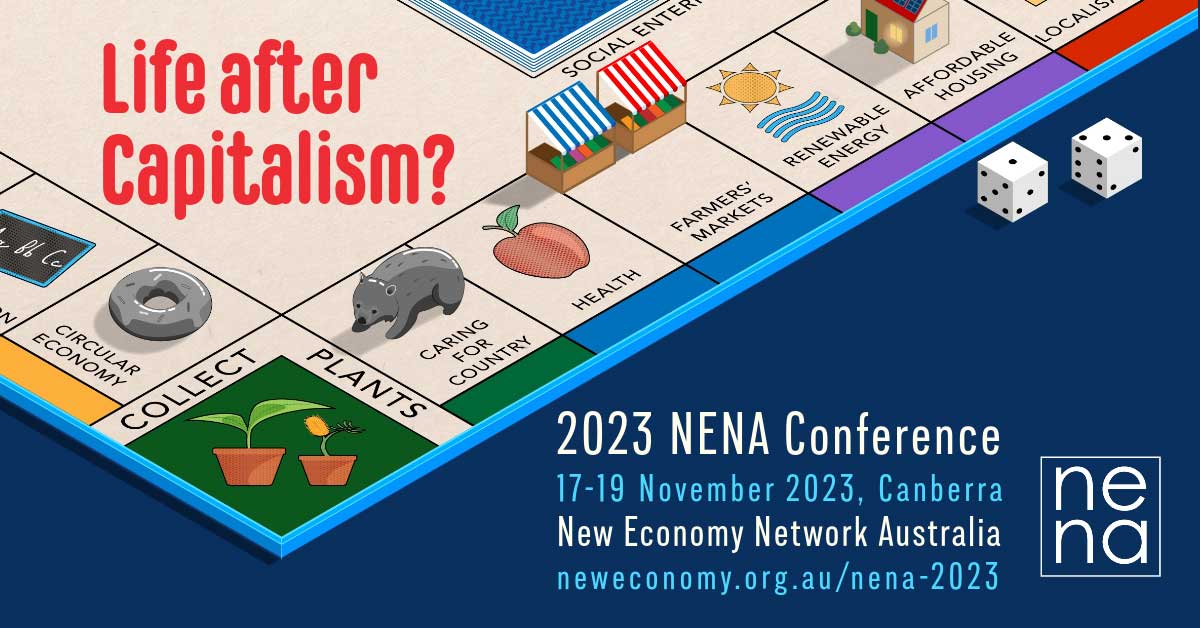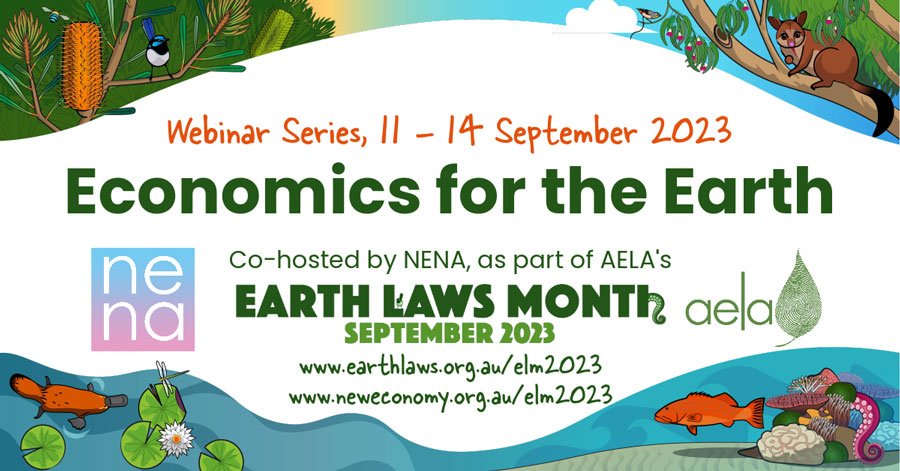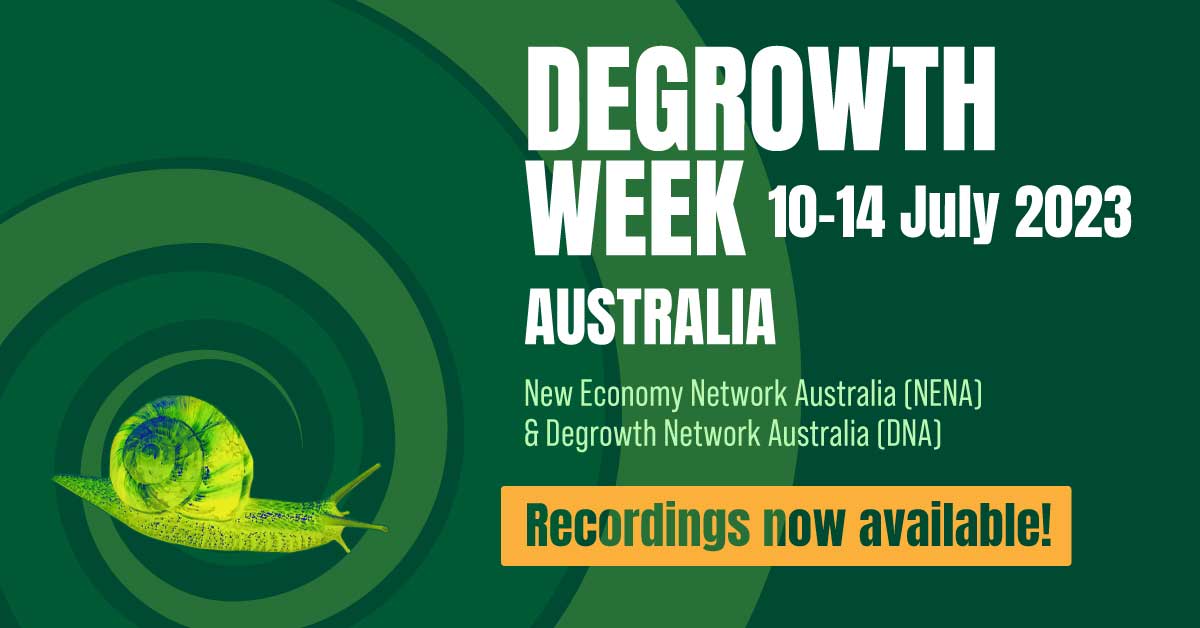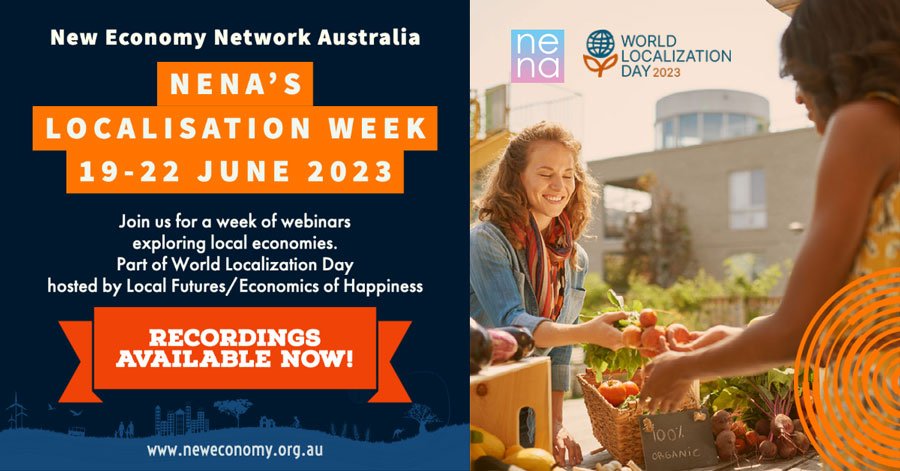I recently watched a TED talk featuring Yanis Varoufakis, the former Greek finance minister and prominent commentator on economic and political affairs in Europe. He said that within the largely independent economic sphere, corporate power has become unconscionably great. This excessive power, gained especially through withholding vast amounts of capital from healthy circulation, has led, he says, to a “colonising and cannibalising” of the political sphere to such an extent that it has become a threat to democracy. Varoufakis speaks as a self-professed Marxist and, as is well-known, Marxism is fundamentally an economico-political analysis.
What Varoufakis does not consider – and what socialists and capitalists (or indeed any blending of the two) generally fail to address in any fundamental way – is what we can call the “cultural-spiritual” sphere of society. For, indeed, there are three spheres which make up the body social: the economic, the politico-legal, and the cultural-spiritual. Each is organically connected to the others and none is more important than the other two. This threefold delineation of society was recognised by the eminent German sociologist Jürgen Habermas,[1] and, before him, by the philosopher and educator Rudolf Steiner.
Steiner articulated a detailed picture of social renewal based on this understanding. For him,it is as meaningless to speak about economics independently of the other two spheres as it would be to speak about a plant without considering its relationship to the Earth and the Sun. Steiner’s social and economic ideas have yet to be properly evaluated and understood, but I suggest that if ideas for a “new economy” are to be useful, they need to be based on this holistic point of view.
Varoufakis makes a startling proposal (although he admits the Marxist Left had the idea a hundred years before): he says that what has become differentiated – for him, the economic and political – must be reunited. In truth, the differentiation of the economic from the political is the result of a cultural evolution spanning millennia. A decisive emancipation of the economic sphere in European civilisation took place during the Industrial Revolution when market relations came to dominate society. However, we must go back much further, to ancient Greco-Roman times, to find the origin of the kind of logical, legalistic mentality required for the emergence of the mercantile contracts and commercial arrangements which led eventually to the economic emancipation. It was back then when the politico-legal sphere, with its democratic principles, started to differentiate itself from the totalising religious structures of theocratic societies such as that of ancient Egypt. The Roman world was characterised by its sophisticated politico-legal structures. Regarding the cultural-spiritual sphere, in the West cultural and spiritual life was bound to the monarchy and church until relatively recently. Only from the Romantic period of the 18-19th centuries onwards do we see the cultural sphere begin to decisively separate.
Thus we can, with Steiner and Habermas, speak of contemporary society as being tri-membered, at least in an incipient form. Most emphatically, the thrust of western development has been towards a threefold division of society. Far from any need to reunify, Steiner presents the idea that a recognition and evermore conscious articulation of the three spheres of the social order is precisely what is necessary for social renewal in our time and for the evolution of a healthy world economy. How, then, does this address Varoufakis’ concern that a separate and all-powerful economic sphere is currently undermining democracy? What solution could Steiner’s ideas possibly offer in place of Varoufakis’s Marxist suggestion that the economic must reunite with the political in order to preserve democracy? In the following, I show a solution exists, and that it involves a proper understanding of capital. It is necessary to approach this solution systematically: we first need to develop a vivid picture of society in its threefold wholeness.
Modern, differentiated society is an expression of formative principles at work within social evolution, something like the way a plant unfolds and reveals its nature most fully in its flower.[2] The first formative principle is polarity, which manifests in the division between the economic and cultural-spiritual spheres.
What is the economic sphere?. Contrary to the common association of the economy with money, the economic sphere in fact embodies the ideal of fraternity or solidarity. We could also call it the gesture of communality. It is “we”. Everything about the successful production of goods from the Earth and the provision of services depends on people working together cooperatively. When a precision machine is being manufactured, with thousands of individuals involved, the creative intentions and aspirations of particular individuals is not what is most important (except of course, those of the entrepreneur – but we will come to that shortly). The economic sphere constitutes one pole of the social organism.
The other pole, the cultural-spiritual sphere, gives expression most fundamentally to the principle of individuality; it is about “I”. This may seem strange when we consider that in cultural institutions like schools and universities, people are working together in all kinds of ways. But behind the generation of knowledge or creation of any work of art, behind all spiritual or religious deeds of self-realisation, is an act of individual insight and intention. And what we seek in schools is for young people to become individuals, to think for themselves, to unfold their unique capacities and talents unhindered to the greatest possible extent. The ideal central to the cultural-spiritual sphere is freedom, as articulated by the Romantic philosopher and statesman Wilhelm von Humboldt and taken up by John Stuart Mill in his 1859 book, On Liberty, a work which shaped modern liberalism.
Like the poles of a magnet, there is a field of tension between the two poles of communality and individuality. An overemphasis on the individuality pole, it is commonly felt, leads us towards anti-social opportunism and even anarchy. An overemphasis on the communality pole leads us to the kind of absolutist socialist state where the whole population is considered to be one great family, working collectively for the good of the whole. Society conceived as a polarity leads to unending conflict between freedom and authority, anarchy and monarchy.
But there is a third sphere in differentiated modern societies which stands between these two poles, relating and harmonising them without compromising them: this is the so-called politico-legal or political-rights sphere. The ideal of equality functions within and shapes this third sphere; democracy itself is founded on the principle of equality – “one person, one vote”. Consider any legally established human right; a right should apply to every human individual equally, not just to myself but to every “I”. In every right we can see the communal and the individual, the many and the one, converging and interpenetrating. The political-rights sphere, correctly seen, is only mediatory. The Romantic philosophers call the mediatory principle the copula – “that which binds”.[3] The three ideals of liberty, fraternity and equality were proclaimed in the French Revolution in a way which anticipated what now needs to be a consciously articulated social order.
So how does the concept of a trifold social organisation prompt a new understanding of capital? What becomes apparent is that capital is not an economic phenomenon. Let us trace in brief terms the economic process leading to the production of capital. The economy is founded on what I will here call “Earth”, or “matter”. In traditional economics it is “land” but this is inadequate; for a start, the waters and gaseous formations of the Earth are definitely within the scope of economic interest and activity.
No mineral, liquid, gas, plant or animal, enters into economic life by virtue of the activity of a single human individual working for her or himself; there must be a division of labour and a form of exchange. Simple or complex, any economic event is a cooperative, not self-subsistent, activity. The fraternal aspect of human nature is awakened and drawn out in the way we collectively engage with the Earth, allow it to be transformed and how it enters into the social sphere.
When we speak of “raw materials” as something which can be worked on to produce commodities with use value, we mean that nature has come within the economic purview and is being viewed in terms of a specific human potential. A transformative process takes place, from nature as such, to nature as raw materials (say, felled timber and extracted iron ore), to a product such as a hammer. Mind – or what I will here call non-material “spirit” – works on nature as conscious intention, transforming it into commodities. When we look at timber and iron ore, nature still “shines out” to a large extent. When we look at a hammer we perceive that nature has receded and it is the “idea” which shines out – the idea of the hammer’s function and value in use. As a product – such as a foodstuff – is consumed and its purpose realised, its value decreases and its substance rapidly returns to Earth; but, unlike a foodstuff, we call a hammer a capital good because it holds potential for another specific form of activity – namely, building.
At the moment of economic exchange there is a balancing of production and consumption. Barter (the exchange of a good for a good) was an aspect of the most ancient form of consciousness in which human beings belonged to the cycles of the Earth, to the coming and going of seasons, to the instinctive rhythms of production and consumption in which people lived and worked communally in theocratic or feudal forms of society. By contrast, the appearance of forms of exchange in which capital arises as profit is correlated with the evolution of human individuality and its emancipation from instinctive life within nature’s cycles. Unlike a capital good, non-specific capital is pure potentiality.
Just as nourishing fruit grows from the interaction of Earth and Sun, where the Sun’s energy distils mineral substance into energy substance (sugar), so capital arises as the interaction of spirit and matter, from the transformation of Earth by intelligence. Through this process pure actuality – that is, mineral, liquid and gaseous nature, plants and animals which are complete unto themselves and in a sense “finished works of nature” – is transformed into a state of potentiality. Capital is the flowering of the transformative economic process and, like the flower, awaits fructification. In one way or another it is human creativity which fructifies capital. Spirit transforms Earth into capital for the realisation of the human spirit.
Thus we can see that capital, as it is gradually distilled from the substance of Earth, reaches beyond the economic life and reveals itself as belonging to other spheres of social life. Consider again the growth of a plant; in its seed stage the plant belongs primarily to the Earth and its dark enclosing spaces; in the vegetative stage, with its sprouting, spreading and spiralling rhythms of leaf forms, it belongs primarily to the realm of water, air and light. With the flower the plant is given over mostly to the light and warmth of the Sun. This is revealed in the flower’s colours and fragrance, the sweetness of the nectar, the cup-like receptive space of the blossom into which an insect or golden pollen descends from light-filled heights. The flower belongs primarily to the sphere of the Sun.
Likewise with the economic process: at the stage of commodity it still belongs primarily to the Earth and to the economic sphere of the social organism; as a capital good it is still an economic product but also expresses an orientation to the cultural-spiritual sphere, for the potential of any capital good (say, a hammer, a paintbrush or a computer) is that can be fructified by a creative impulse (in this case, the will to build, to paint or to plan an initiative). In its most distilled form as pure capital it expresses indeterminate potential, and in this state belongs primarily to the rights sphere, orientated towards the cultural-spiritual sphere. This is because capital “speaks” principally to the human creative spirit, the individual capacities and creative intentions which can be realised through the capital’s potential. And every individual human being has the right to capital, for it is distilled from the common Earth, from the minerals, plants and animals, through the labour of countless individual workers; it is thus a communal asset. No matter how ingrained the idea is that capital is an economic phenomenon, it is not. In connection with the worldwide and highly topical debate concerning a “universal basic income” we see, although as yet inchoate, the dawning recognition that capital is indeed a human right.
To say that capital is the asset of the whole community means something entirely different from saying that the whole community of individuals owns this capital. According to Marxist thought, the aim of socialism and eventually communism is to remove capital – meaning capital goods (the means of production), land and financial capital – from the hands of the few and place it into the hands of the many in order that they can control it for their mutual benefit. Marxism, just like capitalism, conceives capital only economically, treating it as a commodity which can be possessed – either by a few or bymany. But capital, as we have seen, is not an economic phenomenon at all; it arises in the economic sphere but comes in its most heightened form to belong to the rights sphere where it pertains to the cultural-spiritual sphere. Only a vivid imagination of the dynamic social whole will bring understanding to the way capital relates to the social whole through its development. Capital comes to fruition in the cultural-spiritual sphere and what ensures that this coming-to-fruit will take place is the mediator, the political-rights sphere. It is right and good that the whole of capital is made available to the spiritual-cultural life of society because that is the meaning of capital in human social life. A narrow, constricted sense of capital can only result in a constricted, diseased social condition.
Every single human being has equal right to capital distilled from the common Earth. Like every right – it is accorded to a person simply by virtue of them being a human being. And it is the task of the political-rights sphere to ensure this right is accorded with. Every person has the equal right of access to capital but that doesn’t imply that every person has to receive an equal amount of capital; every person has different needs and different capacities. Capital is formed by the human spirit for the realisation of the human spirit and the criteria and method of judgement about how capital is to be distributed and used must therefore be a determination of the cultural-spiritual sphere, by those who actually work within that sphere. Steiner writes:
When [an] individual is no longer willing or able to direct his abilities to the use of capital [at the service of the community], this use must be transferred to another person of similar abilities. It will not be transferred by state prerogative or by economic power, but by finding out, on strength of the training acquired under the free spiritual life, which persons will make the most suitable successor from the social point of view.[4]
Those who live and understand human freedom and the requirements of free individuality must surely be those whose task it is to administer this aspect of social life. Banks – genuine community banks – have a vital role to play in the distribution of capital because such banks are “rights organs” - mediators between the economic and cultural-spiritual life. But banks themselves are not the only determiners of how the potential of capital is to be realised – or, at least, they do so only through interchange with those in the cultural-spiritual sphere who are directly involved with the needs and creative capacities of free human individuals.
Thus, in the picture of the threefold social order which Steiner sets forth, the economic life generates and utilises capital but it does not distribute it. Like the other two spheres, the economic realm is entirely autonomous and self-governing in its functioning, which involves intimate association between producers, distributors and consumers. What Steiner calls the “associative economy”[5] will be the subject of a further article.
In the diagram below we see the pure potentiality of capital opened in the rights sphere, yielding itself to the intentions, ideas and visions freely given birth to in the cultural-spiritual sphere. The problem with such a diagram is that it gives the impression that capital avoids the economic realm in a spatial sense, and that rights and spiritual matters in relation to capital and labour are dealt with in a bureaucratic arena somewhere beyond the economic. That is far from the truth; in the living reality of the social organism the three spheres are independent yet interpenetrated. Every workplace has an economic context as well as legal-administrative and cultural-spiritual dimensions where individual rights and freedoms are exercised. In free, non-bureaucratic collaboration and negotiation between workers, managers and administrators the issues of capital and labour are worked out creatively.
Capitalism is a distortion of this picture because it wants the individuality principle (freedom) to infiltrate the economic sphere with what is called “free enterprise” and the “free market”. The result is a corruption of both the inherently fraternal nature of the economic sphere and the ideal of liberty which belongs primarily to the cultural-spiritual sphere. Capitalism creates this distortion by turning the entrepreneur into a capitalist, an owner of capital (including capital goods or the means of production). Seen from a threefold perspective, the creative intentions and actions of the entrepreneur belong entirely to the cultural-spiritual sphere, along with every other form of production and creative envisioning. And how much capital will be accorded any entrepreneur’s economic enterprise is also a cultural-spiritual determination.
Returning to Varoufakis’s contention that the economic sphere must be reunited with the political sphere, it is only possible to think this way when we do not understand capital as a rights phenomenon pertaining to the cultural-spiritual sphere. Only from the understanding of society as a threefold organisation can we properly grasp the importance of the cultural-spiritual sphere in relation to the other two. Stirred by the ideal of true universal brotherhood, early twentieth century communist uprisings sought to liberate the proletariat workers from their capitalist masters by uniting the economic sphere of society with the political. This revolutionary agenda relied on the political realm’s brute power of coercion; there was no conception that the true liberating power may reside in the individual and in everything which supports the unfoldment of the individual. Steiner writes:
Marx and Engels were right to demand a new economic order – right, but one-sided. They did not perceive that economic life can only become free when a free sphere of rights and free cultivation of the spirit are allowed to arise alongside it.[6]
Steiner insists that only an independent cultural and spiritual life can “supply the economic life with the human spiritual impulses that can fructify it ever and again . . .”[7] Notwithstanding its one-sided emphasis, the force of economic emancipation which communism represents has been highly significant in the movement towards a conscious threefolding of the social organism. The failure of communist revolutions in the twentieth century, through their attack on individual freedoms and individual rights, has served to bring clarity to a more healthy way of shaping the social organism. They have demonstrated the need for all three spheres of social life to come into their own, to achieve a high level of independence from each other, such that they can work together as an integrated wholeness.
References
- [1] Jürgen Habermas, Legitimation Crisis, translated by Thomas McCarthy (Beacon Press, 1975), 5-6. Habermas calls these three interrelated spheres the economic system, the political-administrative system and the socio-cultural system, each with a separate “control centre” in organisational terms.[2] Some sociologists maintain that social evolution is not about organic growth but only comes about through human intentionality. In fact, it is both, in just the same way a human being is an organism, growing and differentiating, and an individual moving through different intentional states.
- [3] See, for example, Mark J. Thomas, ‘The Mediation of the Copula as a Fundamental Structure in Schelling’s Philosophy’, Schelling-Studien (2014) 2, 20-39.
- [4] Rudolf Steiner, The Renewal of the Social Organism (Rudolf Steiner Press, 1985), 101.
- [5] See Rudolf Steiner, Steinerian Economics, edited by Gary Lamb and Sarah Hearn (Adonis Press, 2014); Gary Lamb, Associative Economics (Waldorf Publications, 2010) and Christopher Houghton Budd, The Metamorphosis of Capitalism: Realising Associative Economics (Associative Economics Institute, 2003).
- [6] Rudolf Steiner, The Renewal of the Social Organism (Rudolf Steiner Press, 1985), 68.
- [7] Rudolf Steiner, The Renewal of the Social Organism (Rudolf Steiner Press, 1985), 68.



















